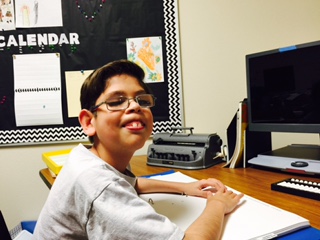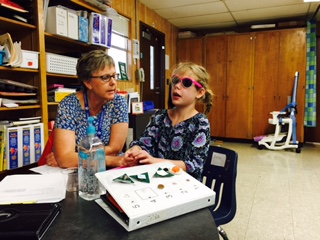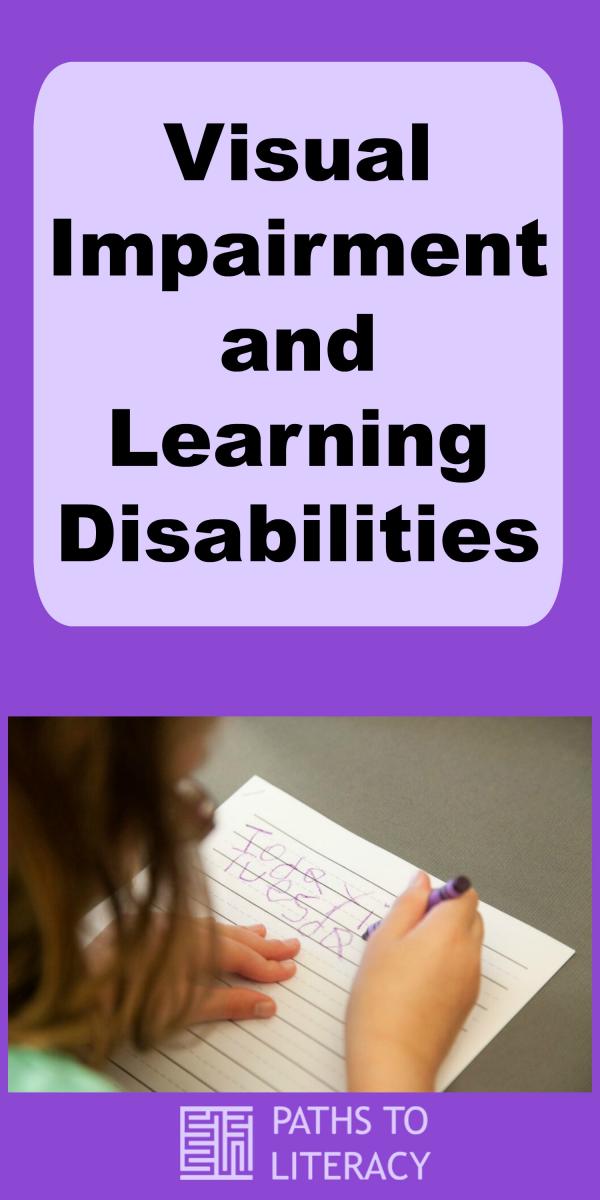Visual Impairment and Learning Disabilities
Many teachers, therapists, and parents have questions about identifying learning disabilities in students who are blind or visually impaired. When a student has difficulty completing an assignment, it is often hard to know if the challenge is due to the visual impairment or another underlying cause. There are many different factors that may contribute to an individual student having difficulty learning, and the educational team should look at each of these during assessment and planning. It is important to consider visual challenges, as well as any health issues. In addition, hearing loss, attention difficulties, language development, understanding of English, and motor skills should also be evaluated for any role they may play for a particular student.
It may be helpful for teams to ask the following questions when planning what type of intervention would be most appropriate:
- How is the child using his or her vision? To what extent is the child's vision interfering with the decoding process? Does the child need corrective lenses and, if so, is s/he using them?
- Has the child's hearing been tested?
- Does the child have motor challenges or medical issues which may affect her ability to perform?

Marnee Loftin, retired Psychologist from Texas School for the Blind and Visually Impaired, has written extensively on this topic and we are sharing some of the resources she has created. We invite you to explore these pages!
Instructional Strategies for Struggling Readers
These general guidelines offer instructional strategies to increase fluency, to increase comprehension, for writing, and for mathematical abilities.
Indicators for Possible Learning Disabilities
- Basic Reading
- Comprehension
- Written Expression
- Math Calculation
- Math Reasoning
- Auditory Processing Problems
Determining the Impact of the Particular Eye Condition
-
Are the problems noted directly attributable to the eye condition?
-
Examples are:
- Missing punctuation because of low acuity
- Slow reading rates because of use of LV devices
- Problems in maintaining place in reading passages because of nystagmus
-
Examples are:
- Has there been a recent change in learning medium?
- Are the educational problems a result of the failure to use appropriate modifications?
- Have there been frequent changes in learning medium?

Getting Started with a Struggling Reader with Visual Impairments
- How do reading skills develop in children?
- How does this development vary for children with visual impairment?
- How can parents encourage early literacy?
- What are early signs of a struggling reader?
- Are there ways to separate reading difficulties from the visual impairment? (Note: This topic will be addressed in a future post.)
- What are characteristics of a struggling reader in elementary and middle schools?
- What educational interventions are available?
- What will happen in the future?
Providing Support for Students with Learning Disabilities
Once you've determined that your student who is blind or visually impaired has a learning disability, what should you do? Dr. Loftin outlines three steps to get started:
-
Defining the problem
-
Planning specific interventions
-
Maintaining specific data
The Next Step in Intervention: Formal Evaluation
- Myth #1: The law specifically forbids the evaluation of students with visual impairments because the evaluator cannot “rule out” the impact of the visual impairment.
-
Myth #2: Formal psychoeducational testing provides little useful information about children with visual impairment.
-
Myth #3: It is critical that the psychologist have knowledge and experience in evaluating the child with visual impairment prior to testing my child.
-
Myth #4: The presence of a familiar adult during the evaluation will help the child do better on the tests.
-
Myth #5: Growth in any areas will result in improved performance on all types of psychoeducational evaluations.
-
Myth #6: All types of learning problems can be identified and appropriate techniques developed for effective intervention.
Determining the Presence of a Learning Disability: The Evaluation
Determining the presence of a specific learning disability is a complex process. Most parents and Teachers of Students with Visual Impairments (TVIs) have a general idea of the procedure, but it is important to know several things about the process. These include:
- Federal regulations that form the base for all state-mandated procedures
- Questions that may arise during the initial referral for evaluation
- Evaluation procedures that will occur

Understanding Dyslexia in Children with Visual Impairments
All information suggests that dyslexia is underestimated in the population of persons with visual impairment. It is important to remember that dyslexia is not a visual processing disorder.
Emotional and Behavioral Difficulties Observed in Students with Visual Impairments and Learning Disabilities: ADHD
In discussions of learning disabilities as well as struggling readers, adults often focus upon the academic difficulties that these students are experiencing. In some instances, the emotional and/or behavioral difficulties that often accompany academic problems are of similar or often even greater concern. These difficulties may become less intense as the students gain academic skills and coping strategies. Sometimes, however, these difficulties will remain lifelong problems. It is important that we understand these emotional and/or behavioral difficulties as well as develop strategies for both the student and adults in their lives.
Emotional and Behavioral Difficulties in Students with Visual Impairment and Learning Disabilities: Anxiety
This article explores some of the ways in which anxiety may affect the performance of students with visual impairments and learning disabilities through these questions:
- How do worried students and anxious students differ?
- I know that there are different types of anxiety for adults. Is this the case for students with VI and LD?
- What behaviors are associated with Generalized Anxiety Disorder?
-
The parents keep talking about anxiety, but I see a great deal of non-compliance. How do I tell the difference?
-
Are there particular situations that tend to make anxiety worse for students?
-
How can I help a student who seems to be dealing with anxiety?
-
What is Cognitive Behavioral Therapy?
-
Is test anxiety the same thing as anxiety?
-
Are there techniques that help with test anxiety?
Recognizing and Building Abstract Thinking in the Child with Visual Impairment
As the world (and academic tasks) become more complex, students with visual impairment may begin to experience more difficulties in performing at their potential. These problems may be related to a specific learning disability or cognitive abilities. However, it may also be a problem in moving from concrete to abstract ways of thinking.
Additional Resources by Marnee Loftin
Learning Disabilities and Visual Impairments Workshop
See all articles on this site by Marnee Loftin.
Other Related Articles on Learning Disabilities in Students Who Are Blind or Visually Impaired

